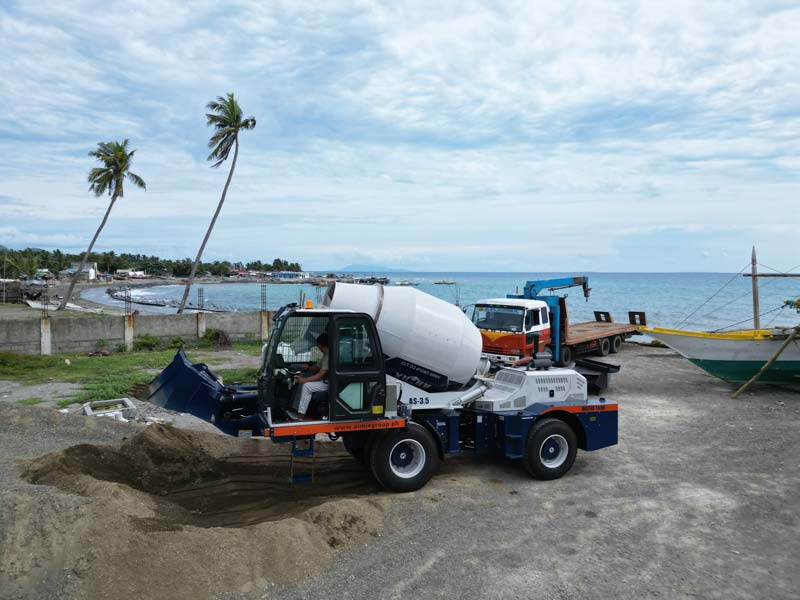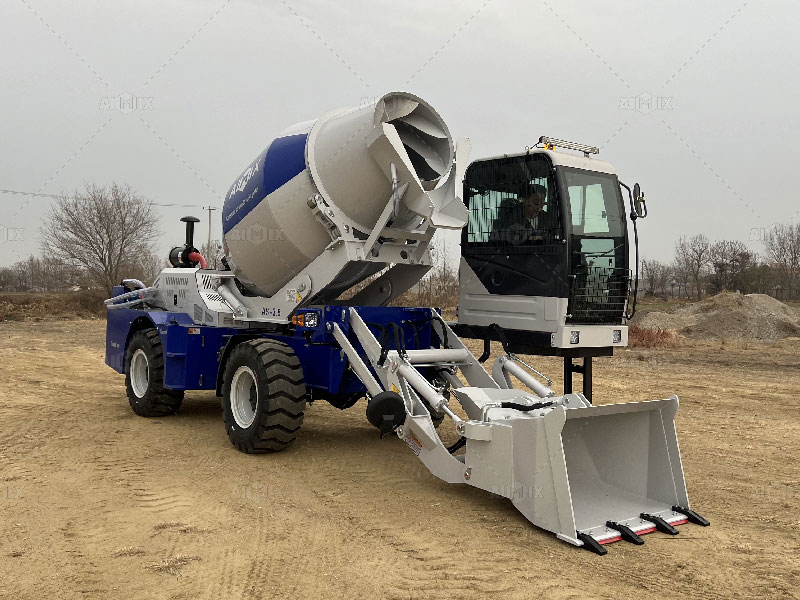Construction companies are constantly looking for ways to save time and money while improving quality. One solution that has gained global popularity is the self-loading concrete mixer. This machine combines multiple processes—loading, batching, mixing, and transport—into a single, highly mobile unit. On average, contractors report around a 15% increase in production efficiency when switching to this technology.
Why a self-loading concrete mixer boosts productivity
1) One operator, multiple functions
A traditional concrete workflow requires a loader, a batching plant, and a transit mixer, often with three separate operators. By contrast, the self-loading concrete mixer(hormigonera autocargable) only needs one operator, reducing labor costs and eliminating delays between machines. This streamlined process ensures faster output with fewer personnel on site.
2) Faster cycles from loading to pouring
Because the machine can load aggregates directly, weigh them, and mix while moving, cycle times shrink dramatically. Over the course of a full workday, contractors often save minutes per cycle, which accumulates into hours gained. These shorter cycles are a major reason for the 15% improvement in efficiency.
3) Consistency and quality control
Modern self-loading mixers include weighing systems, water meters, and programmable controls. This guarantees consistent concrete quality, reduces waste, and minimizes rework. Reliable quality not only improves structural performance but also saves time at the jobsite.

Regional considerations: Bolivia and Peru
self-loading concrete mixer Bolivia
Construction environments in Bolivia present unique challenges such as steep terrain and high altitudes. A self-loading concrete mixer Bolivia is especially valuable here, as its powerful engine and 4×4 drive can navigate rugged conditions where traditional equipment struggles. Contractors in cities like La Paz and Cochabamba benefit from machines that are both compact and durable, ensuring consistent output despite environmental hurdles.
self-loading concrete mixer Peru
In Peru, construction projects range from coastal cities to mountainous Andean regions. Choosing a self-loading concrete mixer Peru(hormigonera autocargante Perú) ensures flexibility across different environments. Coastal jobs may require corrosion-resistant features, while high-altitude sites demand engines with strong cooling systems. Local support and spare parts availability in Peru also play a key role in sustaining long-term efficiency gains.
Specification checklist to realize efficiency gains
Right drum size and engine power
Selecting the proper drum capacity is critical. Oversized units waste fuel, while undersized machines require too many cycles. The right balance ensures operators can maintain steady productivity without overworking the equipment.
Automation and weighing systems
Look for mixers(autohormiguera Bolivia) with integrated load cells and recipe storage. These features eliminate guesswork and reduce cement overuse, keeping both costs and production times in check.
Mobility and terrain adaptability
Hydrostatic transmissions, heavy-duty tires, and differential locks allow machines to move smoothly across rough terrain. This adaptability is particularly important for contractors in Bolivia and Peru, where construction sites often involve steep gradients and limited infrastructure.
Operator comfort and safety
Comfortable cabins with good visibility, ergonomic controls, and safety features like ROPS/FOPS protection help operators maintain focus and efficiency during long shifts. Higher comfort directly contributes to sustained productivity levels.

Practical tips to capture the 15% advantage
Track real cost per cubic meter
Rather than only looking at purchase price or fuel, contractors should measure total cost per cubic meter of delivered concrete. Factoring in labor savings, reduced downtime, and lower maintenance costs reveals the true efficiency advantage of self-loading mixers.
Optimize site layout
Organize aggregate piles, water supply, and turning areas to minimize unnecessary movement. Even small improvements in site logistics can have a big impact on cycle efficiency.
Train operators effectively
A short training program on batching, driving, and maintenance routines ensures operators can maximize output and protect the machine from unnecessary wear.
Preventive maintenance
Regular cleaning of the drum, checking filters, and scheduled servicing prevent breakdowns during critical pours. Preventive care keeps machines consistently delivering high efficiency.
Conclusion
The self-loading concrete mixer is more than just a piece of equipment—it is a productivity solution. By consolidating tasks, improving cycle times, and delivering consistent quality, contractors can boost production efficiency by 15% or more. For regions like Bolivia and Peru, where jobsite conditions vary dramatically, choosing the right model and manufacturer like AIMIX ensures these benefits are both achievable and sustainable. With the right training, planning, and equipment selection, the self-loading mixer becomes a cornerstone of faster, smarter, and more cost-effective construction.